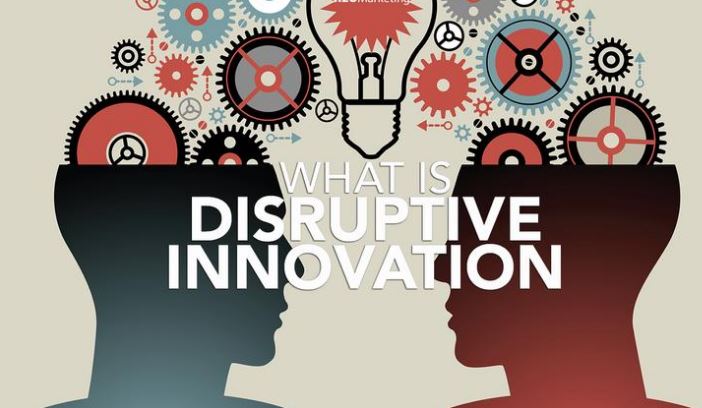Disruptive Innovation
Over the past decade, the business world has been positively and negatively affected by several disruptive innovations. Disruptive innovation occurs when a new or underrated company initially at the bottom of an industry’s market moves up and eventually displaces the existing competitors. It alters the industry’s competition strategies by introducing completely new approaches. The term disruptive innovation was first coined in the book, The Innovator’s Dilemma. In the 1997 best-seller, a Harvard Business School professor wrote about “why some innovations that were radical in nature reinforced the incumbent’s position in a certain industry, contrary to what previous models would predict.”
New business adopts new layouts that cannot be mimicked by competitors making it the lead in that specific industry. This subsequently affects the entire market network and processes. For that reason, businesses have been striving to shift their means of operation to keep up with this competition.
Disruptive innovation has led to business shifts from traditional approaches to modern technological approaches. Technology is continuously experiencing a revolution. Technical changes or digital innovations lead to a technology disruption (Rachinger, Korajman, Vorbach & Guggenberger, 2019). An excellent example of how companies have shifted due to the internet and digital innovation is in the competition techniques.
Companies have adapted to a digital transformation strategy in which they integrate various digital technologies in all the main business operation areas. Offering customers an exemplary digital experience at a low operation cost demands new technological business applications. In the end, the market concedes these innovations. They speed up operations and convey businesses’ outcomes more effectively.
Digital transformation means a change in a business’s culture as well as a change in thought. This transformation has created a need for organizations to change their dynamics to swiftly cater to the industry’s changing needs. Today’s management teams are working hand in hand with IT experts to meet the industry’s competition by speeding up the company’s activities, lowering operational costs, and generally improving the whole business process.
The digital transformation process positions the customer at the center of the business model (Kotarba, 2018). Businesses are taking advantage of technology to reach their customers more effectively and efficiently through mass media and advertisements. This new model shapes and changes the entire working and operations of a business. Technology has also made it easier to adapt to the changing demands of the market.
However, these technological disruptions have not been advantageous for all businesses. They are a great challenge for companies that have not been able to cope with the sudden changes followed by high paces. This has seen the disintegration of past business models and the closure of big businesses.
Disruptive Innovation and Technological change
Technological change has influenced and pushed businesses beyond the traditional business models from the strategy to the operations. The Australian government is committed to delivering a stable, safe, and inclusive digital economy. It has seized all chances and opportunities brought about by the digital transformation. Most businesses have adapted to innovations such as remote sensors, blockchain, quantum computing, artificial intelligence, robots, and autonomous techniques into their processes, and the results are improved outputs.
More industries have been created for the production of more products and services. Endorsement of digital transformation has brought about more employment opportunities, improved life quality, better-paying jobs, and an improved ministry of industry.
Australia has laid out all the future opportunities and challenges brought about by technological changes. This has enabled businesses to maximize and augment the available opportunities. According to research, Australia’s digital technology innovations contributed to approximately 58 percent of the country’s economy in 2014, and the estimated improvement over the next ten years could be around 315 billion dollars (Fleischmann, Daniel & Welters, 2017). To ensure that all its citizens survive in the technological disruption and that no one is left behind, the government points out all work that is ongoing and analyzes more recommended efforts.
Australia’s digital future is fixated on four primary areas, which include the people, digital tools, digital services, and the regulatory system. The government focuses on people by ensuring that citizens have the right digital skills to operate on new technological innovations. It also ensures that digital tools are integrated by providing adequate infrastructure.
Regulatory systems are maintained by the government, providing an enabling environment that ensures cybersecurity. The government also focuses on better ways to deliver digital services to all citizens equally. Digital technologies have delivered benefits across the economy sectors, such as agriculture, services, health, mining, manufacturing, education, transport, tourism, and emergency services.
However, despite a significant increment in the employment rates, some jobs have definitely been lost. An example is the truck drivers in mine areas who have been taken over by automatic trucks that do not require personnel operation and are safer. The CEDA (Committee for Economic Development of Australia) has envisioned that of all the jobs that would be lost, 40 percent would be attributed to replacement by automation (Healy, Nicholson & Gahan, 2017). The benefit brought by disruption, however, oversee the disadvantages as more employment rates have been recorded since the technological advancements began.
References
Fleischmann, K., Daniel, R., & Welters, R. (2017). Developing a regional economy through creative industries: disruptive innovation capacity in a regional Australian city. Creative Industries Journal, 10(2), 119-138.
Healy, J., Nicholson, D., & Gahan, P. (2017). The Future of Work in Australia: Anticipating how new technologies will reshape labor markets, occupations, and skill requirements. Department of Education.
Kotarba, M. (2018). Digital transformation of business models. Foundations of Management, 10(1), 123-142.
Rachinger, M., Korajman, I., Vorbach, S., & Guggenberger, T. (2019, June). The Influence of Technological Disruptions in Business Ecosystems on Elements of Companies’ Business Models. In R&D Management Conference 2019.
Relevant Posts
Business Dissertation Topics
Innovation and Technology Usage on Business
If you enjoyed reading this post on disruptive innovation, I would be very grateful if you could help spread this knowledge by emailing this post to a friend, or sharing it on Twitter or Facebook. Thank you.

